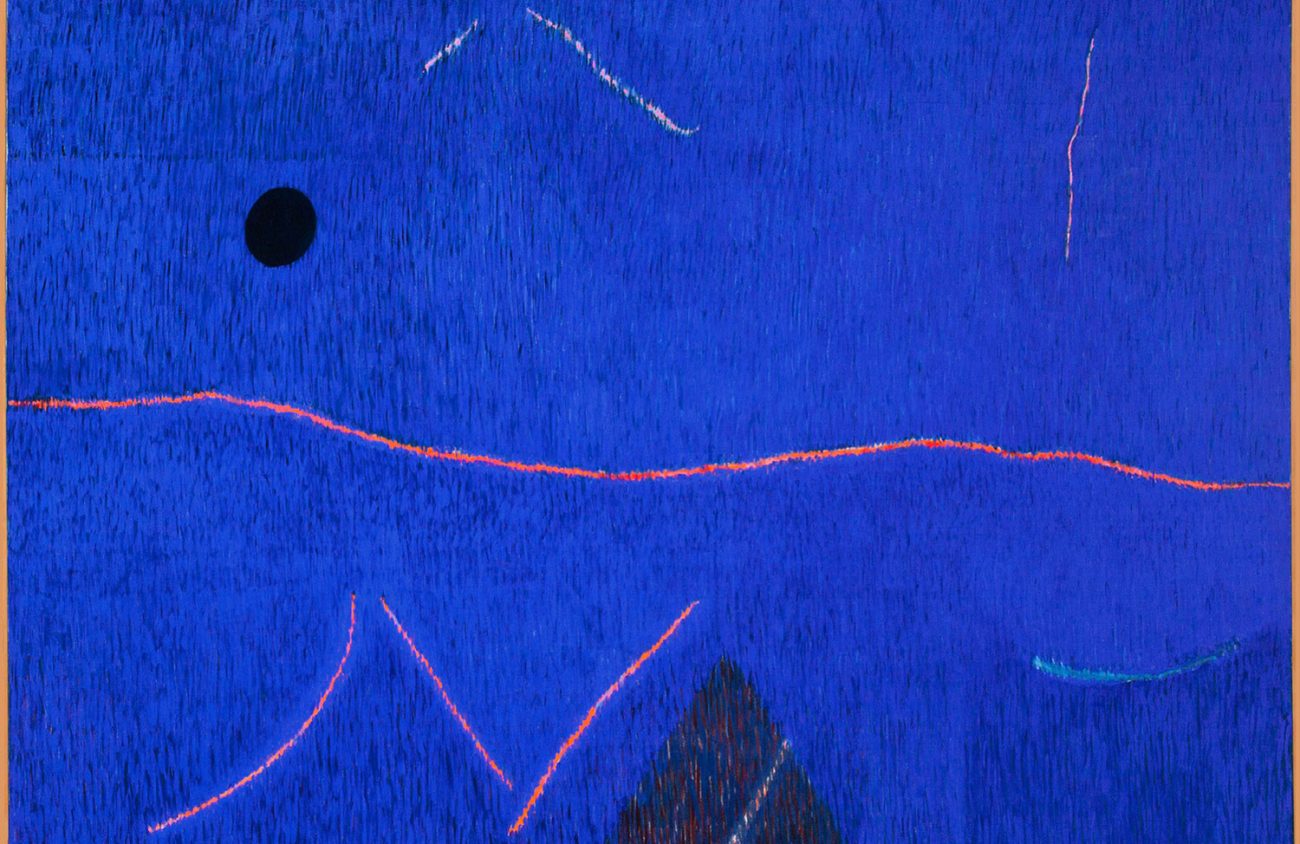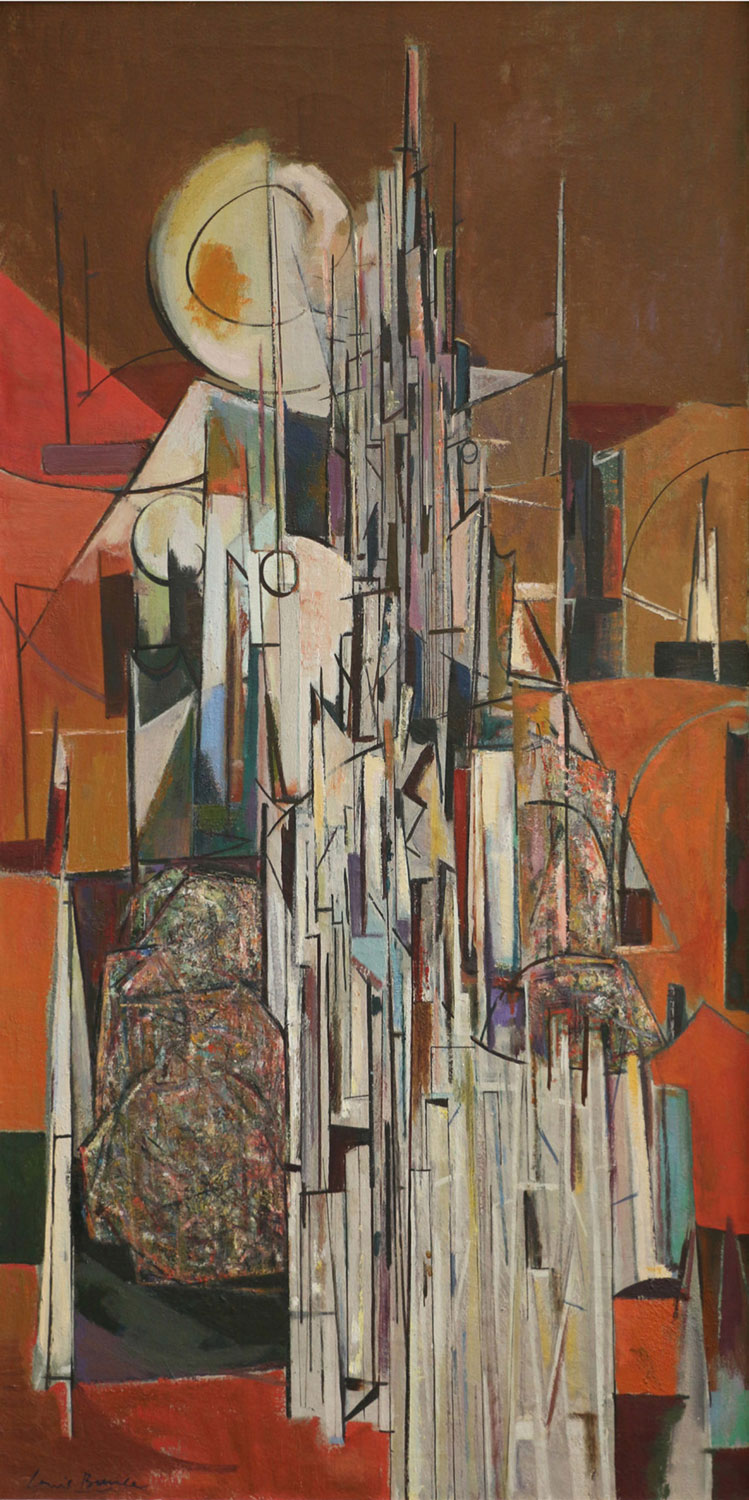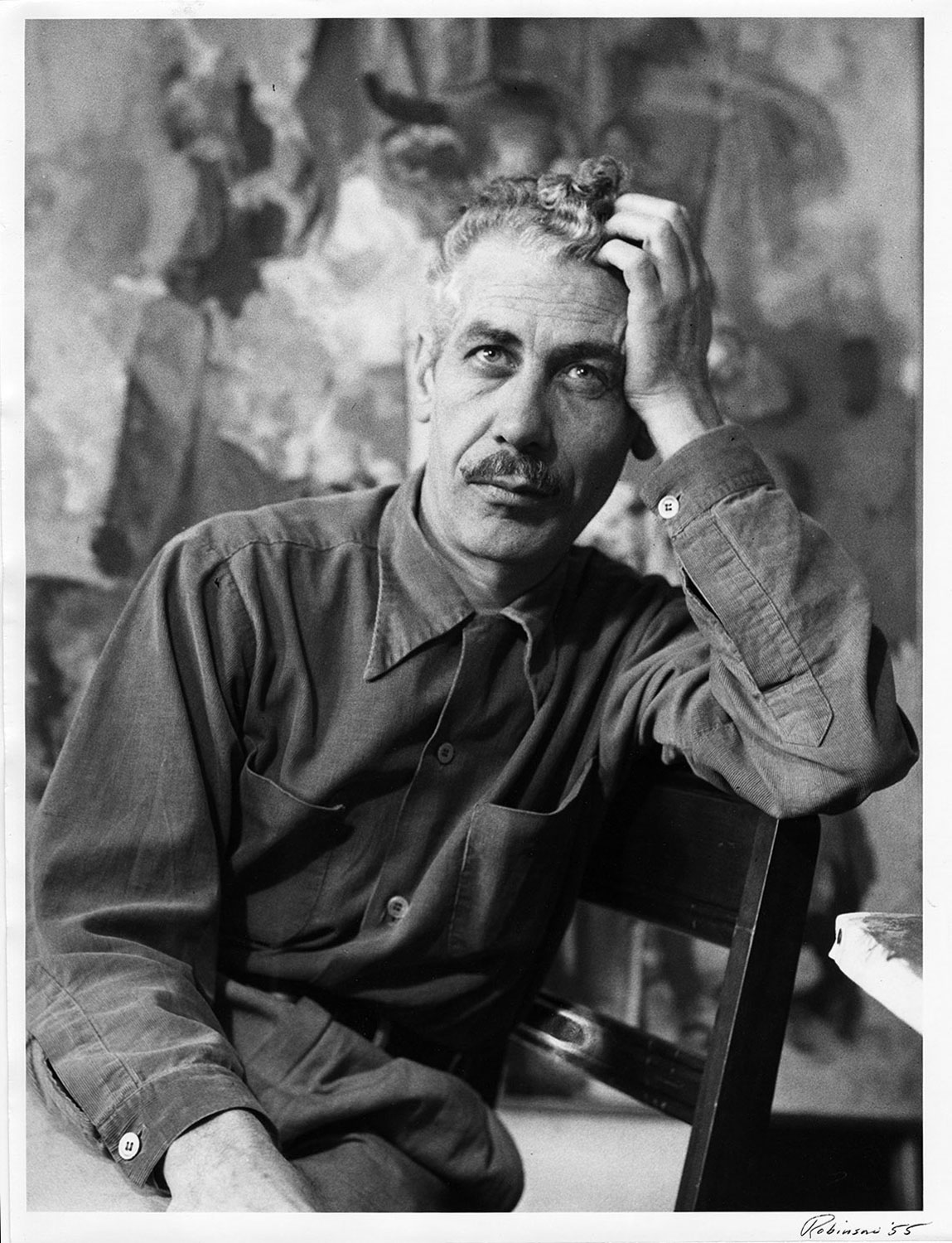Walk into the luscious new Louis Bunce retrospective at Willamette University’s Hallie Ford Museum of Art in Salem, and you’re immediately confronted with a 1932 self-portrait of the artist.
Wearing a banded fedora and sporting a 20-something’s raffish sneer, Bunce — whose career as an Oregon painter spanned the mid 20th century — glances forward through the decades as if to challenge the 21st century museum-goer: “You’ll never meet another artist quite like me,” he seems to say.
All the portrait needs is a cigarette dangling from the lips under that pencil-thin mustache to bring it fully to life.
A generous and charismatic teacher, a hard smoker and drinker, a lover of the Oregon coast, a ladies’ man and a friend of the New York art elite, Bunce was among the most famous Northwest painters working at a time when American middlebrow culture worshipped painting. He was written up in Life magazine and in The New York Times. He was a friend of Jackson Pollock — Bunce encouraged the meeting of Pollock and his wife, Lee Krasner — and of such luminaries as Willem de Kooning, Mark Rothko and Robert Motherwell.
As illustrated in this thoughtful and engaging retrospective, Bunce’s career was born in the social realism of the 1930s and ’40s, blossomed during the cool modernism of the 1950s, and then seemed to lose its way as the artist chased the explosion of art-isms that followed, from abstract expressionism and post-modernism to a return to romanticism.
Roger Hull, a retired art historian from Willamette, curated Louis Bunce: Dialogue with Modernism. Hull stops at the little self-portrait as he offers a visitor a guided tour. “Louie was very debonair,” Hull says, using Bunce’s nickname. “I never met him, but I feel like I know him now.”
Bunce was born in Wyoming in 1907. The family moved to Oregon in 1920, and the young Bunce graduated from Jefferson High School, attended the Portland Art Museum school for a year, and then headed with a friend to New York City, where he studied painting at the prestigious Art Students League.
In the city, he met Pollock and de Kooning and saw the new Museum of Modern Art’s first exhibition, in 1929, which showed works by Vincent Van Gogh, Georges Seurat, Paul Gauguin and — most influentially — Paul Cézanne.
Cézanne’s work had a profound effect on the young Bunce. You can see that clearly in the early landscapes in the Hallie Ford show, such as a small 1929 oil painting “Roadway, Maine,” whose swirling energy and earth-toned palette echo those of the French genius, or the structural drawing in the 1934 “Beach, Port Orford,” painted here after his return to Oregon in the early 1930s.
On his return to Portland, Bunce set himself up for the first time as a serious artist, having rejected the security of a career as a commercial illustrator after ogling those delicious Cézannes. With the country plunged into the Great Depression, he worked for the federal Public Works Art Project and taught at the Federal Art Center in Salem.
And he met and married a Swedish beauty, Eda Hult (yes, from that Hult family). He and his new wife opened the Kharouba Gallery in Portland in 1949, showing contemporary art by such Northwest artists as Jack McClarty, Manuel Izquierdo, Charles Heaney and Amanda Snyder. (The marriage and the gallery would founder together six years later.)
The couple also had a son, John (now Jon), Bunce’s only child. Bunce and his wife traveled back and forth between Portland and New York, establishing a practice of introducing Northwest artists to the larger East Coast scene.
As the 1950s dawned, Bunce’s painting had grown more sophisticated, darker and moodier. He created large, nearly abstract landscapes at the Oregon coast, and he became fascinated by the enormous devastation still apparent in the Coast Range’s Tillamook Burn, the 500-square mile stretch of forest that was still smoldering from a series of wildfires that began in the 1930s.
The ’50s were Bunce’s decade. He had work in a survey show at New York’s Metropolitan Museum of Art. His painting “Burned Land No. 2,” which you can see in the retrospective, was featured in the 1951-52 Whitney Biennial. The tall vertical forestscape, a jumble of angles and lines, was abstracted from the Tillamook Burn, whose devastation logger-turned-conservation writer Stewart Holbrook had declared a fit subject for Oregon artists.
Art News critic Henry McBride wrote that Bunce’s painting was one of just nine in the biennial that “jolted me out of my complacency”; one of the other eight paintings on his list was by Pollock. In 1957, another of Bunce’s paintings was given a full-page reproduction in a Life magazine story on four western painters.
As the decade closed, Bunce was commissioned by the Port of Portland to create a mural for the new Portland International Airport terminal.
His design for the 11-by-20-foot abstract mural plunged Bunce into the center of a seething national controversy over the value of non-representational art — a harbinger of the culture wars we’re still fighting in America today. “People want cows, or horses, or timber, or mountains, or airplanes — something they can recognize,” a port commissioner complained.
The mural — represented in the Hallie Ford show by a large preliminary oil study — so enraged cultural conservatives that Bunce received death threats. He had garbage dumped on his lawn, and was under police guard. After months of controversy The Oregonian newspaper announced it would run no more letters to the editor on the subject.
“There are some things, such as Elvis Presley, Limburger cheese and the sack dress, of which readers either approve or disapprove,” the paper wrote. “There is no middle ground, no basis for compromise, and no hope that the most forceful arguments put forth by believers will persuade nonbelievers. In this category we would place the question of abstract art.”
But the port eventually accepted Bunce’s design, and the mural can still be seen at the airport today.
The final years of Bunce’s career saw him explore a variety of art forms. Some of the paintings from the late 1960s and into the ’70s are clearly influenced by Pop Art; others express more explicitly than ever before the deep sexuality that underscores much of his work.
In 1966, at the age of 58, Bunce married his third wife, an 18-year-old art student named Gloria Scott. The two of them partnered with another woman, Sally Judd, to open the Sally Judd Gallery in Portland, showing contemporary West Coast art. (Scott divorced Bunce five years later and would go on to marry California painter and sculptor Roy De Forest, still known nationally for his quirky dog paintings.)
Bunce may have enjoyed his life in the fast lane, but he never let it interfere with his art.
“Louie was a firm believer in work,” curator Hull says. “He was a lover of social life, of women, of drinking, of hanging out in bars. But he was in the studio every day.”
On June 11, 1983, Bunce died of an aneurysm at his studio in southeast Portland after a day spent talking to a friend about his work.
For lovers of Northwest painting, the Hallie Ford show is a must-see. It’s well presented, thoughtful and sharply focused on the development of Bunce’s vision, locating the artist clearly in the sweep of 20th century art history.
Louis Bunce: Dialogue with Modernism runs through March 26 at the Hallie Ford Museum of Art, 700 State Street, Salem. Open 10 am to 5 pm Tuesday-Saturday and 1 to 5 pm Sunday. $6, $4 for seniors and $3 for students 18 and older. More at willamette.edu/go/hfma.
More ways to explore the art of Louis Bunce
Eugene’s Karin Clarke Gallery is hosting a small exhibit of work by Louis Bunce through Feb. 25 in conjunction with the big retrospective exhibit Louis Bunce: Dialogue with Modernism at the Hallie Ford Museum of Art in Salem.
Louis Bunce (1907 to 1983): Selected Works includes 15 pieces by Bunce, mostly paintings on paper, and spans much of the artist’s working career. The paintings are being shown here by arrangement with Portland’s Russo Lee Gallery, which represents the Bunce estate.
The Karin Clarke Gallery is open noon to 5:30 pm Wednesday through Saturday at 760 Willamette Street. Free.
Two free events about the exhibit will be held this month and next at the Hallie Ford:
At 2 pm Sunday, Feb. 26, artists George Johanson, Lucinda Parker and Jack Portland will join Portland philanthropist and former gallerist Arlene Schnitzer to talk about “Remembering Louis Bunce” at the Paulus Lecture Hall at Willamette University College of Law.
And 2 pm Sunday, March 26, Roger Hull will give a gallery talk about the retrospective at the museum.
Finally, the exhibition is accompanied by a 192-page monograph — much more than a simple exhibition catalog — written by Hull about Bunce’s life and work, with color illustrations. It’s the latest in a series of books published by the museum, most of them by Hull, and most on Northwest artists from Charles Heaney to Nelson Sandgren. The monographs constitute the best library about Northwest art available. The hardcover book is $39.95 at the Hallie Ford Museum. — Bob Keefer



